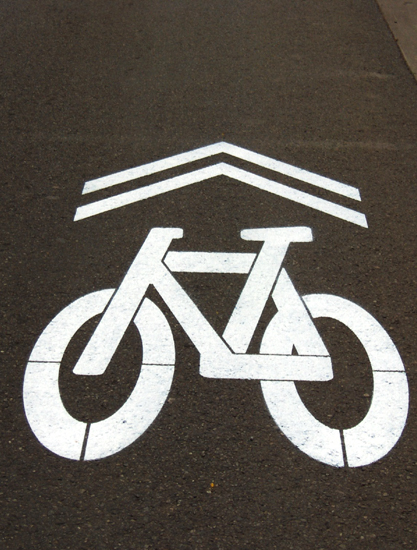Making transportation easier

UCLA is working with the City of Los Angeles to create safer bike lanes.
By Sonali Kohli
Nov. 22, 2009 10:23 p.m.
Cars honking, brakes slamming and bumper-to-bumper traffic are trademark characteristics of big city streets in Los Angeles such as Wilshire Boulevard.
Imagine the plight of a bicyclist on such a street.
Bicyclists who commute to UCLA deal with these perils daily en route to campus, said Allison Mannos, the Los Angeles County Bicycle Coalition urban programs coordinator and a fourth-year Asian American studies student.
“Wilshire is a gauntlet,” added UCLA alumnus and bicycle blogger Alex Thompson. “Either you’re dealing with bumper-to-bumper traffic, or you’re dealing with people zooming past.”
City government has long been aware of the problems bikers face, but efforts to make changes have been continually stalled.
In 1996, Los Angeles created a master bicycle plan with the primary purpose of increasing bicycling so that 5 percent of all daily trips and 5 percent of all home-to-work trips would be made via bicycle by the year 2015.
The city planned to achieve this goal by creating more bikeways and bike parking and by promoting biking in the city,
Thirteen years later, activists say very little has been implemented other than renaming big roads as bike routes, meaning that bikes and cars share the road, and creating some bike lanes on smaller side streets.
The city is now working alongside Alta Planning and Design, a consulting firm, on a new bicycle plan that is supposed to address these issues,
Although the general goal to increase biking in Los Angeles remains the same, the city slowed down the time line for the plan, and lessened the possibility of implementing bike lanes on streets that would need to be altered or widened.
In terms of improving accessibility to UCLA, Alta worked with the city to find key entrance corridors where they could implement bike lanes, and met obstacles from the south, west and east, said Alta senior associate Matt Benjamin.
According to members of the Los Angeles and UCLA biking community, these changes are superficial and will not actually help bicyclists.
“The L.A. master bicycle plan is a mess,” Thompson said.
Mannos, a co-founder of the newly chartered UCLA Bicycle Coalition, said lessening the possibility of a bike lane basically ensures that it will not be implemented.
Benjamin said he disagrees with assertions that changing the wording will change the outcome.
“I don’t think it means it won’t get done,” Benjamin said.
Students are currently in conversation with Los Angeles city council members to voice their concerns that the changes to the plan are more for show than to actually help them.
“We are trying to use political power to put pressure on a very regressive department of transportation,” Mannos said.
Mannos and other members of the UCLA Bicycle Coalition have attended public workshops with representatives from Alta and Los Angeles Department of Transportation to ask questions about the plan and provide input, in addition to sending a formal letter to the department with their concerns and suggestions.
These include allowing bicyclists to ride on sidewalks as long as they do not harm pedestrians, or implementing bike lanes.
The university is also working on a letter stating their formal position on the plan to send to LADOT before the end of the quarter, said UCLA transportation planning and policy manager Dave Karwaski. The letter will include that the university wants to be in contact with the city to improve accessibility to campus.
Karwaski said UCLA Transportation Services has also started a blog to receive input from students.
Benjamin said the city is currently sifting through the feedback and taking suggestions from the public.
The next step will be for the city to vote on the new plan, which may happen around January depending on how long public input is considered.
“A lot of public input is good,” Benjamin said. “I think it’s a stronger draft that will come out.”


